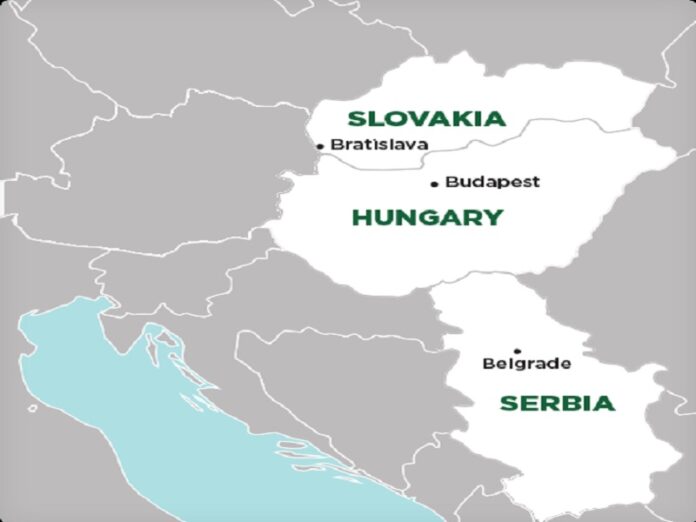Chairman of the Committee on the Diaspora and Serbs in the Region Dragan Stanojevic told Izvestia late last month that Serbia wants to ally with Hungary and Slovakia, which preceded the signing of a new military cooperation pact between Belgrade and Budapest in early April. This analysis here argues that any Hungarian-Serbian alliance of the sort that President Aleksandar Vucic proclaimed is in the works would have very real limits since Hungary is unlikely to go to war with Croatia in defense of Serbia.
The same holds true for Slovakia if it signs a similar pact with Serbia, but the trilateral convergence between them and Hungary could set the basis for a new Central European integration platform. Before elaborating on its contours, a few words will be shared about why there’s even an interest in this. The most effective regional integration platform by far is the Visegrad Group comprised of Hungary, Slovakia, Czechia, and Poland, but internal disputes over the Ukrainian Conflict rendered it dysfunctional.
Polish officials very undiplomatically attacked Prime Minister Viktor Orban for his pragmatic approach towards Russia, while they and their Czech counterparts strongly distrust Slovakia’s populist-nationalist Prime Minister Robert Fico, whose views on most matters are closely aligned with Orban’s. This bifurcated the Visegrad Group into de facto blocs centered on their respective approaches towards the Ukrainian Conflict and consequently resulted in the strengthening of cooperation within each half.
Hungary and Slovakia’s policies towards that conflict mirror Serbia’s for the most part in that they’ve all voted against Russia at the UNGA but favor a swift political resolution to this NATO-Russian proxy war. The primary difference though is that the first two comply with the EU’s sanctions against Russia while Serbia refuses to follow the bloc’s lead on this issue. Moreover, Slovakia armed Ukraine before Fico’s return to office, Serbia is suspected of indirectly doing so but officially denies it, while Hungary never did.
In any case, their broadly shared position towards Russia and potential for trilateral military cooperation forms the ground upon which a new Central European integration platform can be built. The high-speed railway that China is constructing between the Greek port of Piraeus and Budapest via the Macedonian capital of Skopje and the Serbian one of Belgrade is expected to expand Hungarian-Serbian trade and have residual economic benefits for Slovakia too. This could become the platform’s economic spine.
Meanwhile, the security foundation of this platform could be their shared interest in combating illegal immigration, which is much more inclusive than Serbia’s threat assessment of last month’s Croatian-Albanian-“Kosovar” military cooperation agreement that isn’t shared by either Hungary or Slovakia. As for the political basis of their platform, namely their pragmatic approach towards Russia, this is solid for now but requires continuity of government to maintain, which of course can’t be taken for granted.
Therefore, whatever new Central European integration platform they might pioneer should be centered on enduring interests, the only one of which is economic since political and security interests could shift with a change in government. If that doesn’t happen, then they’d have a greater chance of building something meaningful, which could replicate the Visegrad Group’s functions and possibly expand to include new members if adjacent countries’ policies change after elections to align with the founders’.







